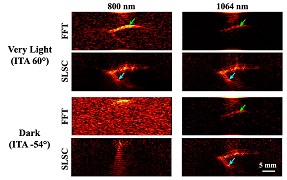Pierre Berini: Plasmonic detection of dengue could address major world health problem
With surface plasmons, better biosensors and new applications are possible, such as rapid screening for specific diseases.
Pierre Berini received his Ph.D. and M.Sc.A. degrees in Electrical Engineering from École Polytechnique de Montréal (Canada), and his B.E.Sc. and B.Sc. degrees in Electrical Engineering and Computer Science, respectively, from the University of Western Ontario (Canada). He is professor of electrical engineering, professor of physics, University Research Chair in Surface Plasmon Photonics, and director of the Centre for Research in Photonics at the University of Ottawa (CRPuO). He was the founder and chief technology officer of a venture capital-financed company, and he collaborates on an ongoing basis with industry.
Berini has received an Natural Sciences and Engineering Research Council of Canada Steacie Fellowship, a Premier of Ontario Research Excellence Award, the University of Ottawa Young Researcher of the Year Award, URSI Young Scientist Award, the George S. Glinski Award for Excellence in Research, and he is a Canada Foundation for Innovation researcher. Berini is a Fellow of the IEEE and of the Canadian Academy of Engineering, and he is a member of SPIE and OSA. He has published seven book chapters, approximately 300 scientific and technical papers in peer-reviewed periodicals and conference proceedings, and is an inventor or co-inventor on 20 patents. He contributes on an ongoing basis to the organization of several international conferences in photonics. His research interests span many areas of optics and photonics, with surface plasmons and their applications being of particular interest.


